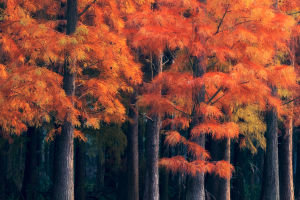Apples, bananas, pineapples, and other fruits at home, if placed in a place with high temperature and poor ventilation, may emit a smell within a few days. This is made of yeast.
The yeast in the fruit creates a unique smell through a fermentation reaction. Continue to dig deeper, and you will find that this is actually closely related to a special way of breathing in plants.
In fact, fresh fruit just picked, its pulp cells are still alive, breathing as usual day and night. Since the peel blocks the outside oxygen, the pulp cells have to perform anaerobic respiration.
Therefore, it should be common sense of life to store fruits in a ventilated and cool place.
When it comes to breathing, we all know that it is a vital physiological function shared by all living things. When breathing stops, it means the end of life. In the case of a human being, if the breathing process is obstructed, it is possible to die of suffocation in just a few minutes.
Human and animal respiration depends on green plants, which absorb carbon dioxide exhaled by animals as a raw material for photosynthesis, synthesize organic matter and release the oxygen needed by animals. This is also the ingenious "carbon cycle" of the natural biosphere.
While emphasizing the great significance of plant photosynthesis, it is often easy to overlook a simple fact: plants are also life, and plants also need to breathe.
Plants have two main physiological responses: photosynthesis and respiration. Photosynthesis only takes place during the day.
Due to sufficient sunlight during the day, after plants absorb water and carbon dioxide, they synthesize organic substances (starch) through the chemical action of sunlight and chlorophyll and release excess oxygen. This process is called "photosynthesis".
Respiration is carried out day and night. Due to the strong photosynthesis during the day, the carbon dioxide produced by respiration is far from enough for photosynthesis. Therefore, a large amount of carbon dioxide must be absorbed from the air to promote normal photosynthesis. At night, photosynthesis stops completely, and plants, like humans, only inhale oxygen from the air and expel carbon dioxide.
Although plants do not have respiratory organs, in fact, in their life, plants, whether they are roots, stems, leaves, flowers, or seeds and fruits, are breathing all the time, but the human eye cannot see it.
Usually, in the case of sufficient oxygen, the organic matter in the plant is completely oxidized and decomposed, and finally, carbon dioxide and water are generated, which is called aerobic respiration. Aerobic respiration can release a lot of energy, which can supply the needs of plant life activities.
For example, processes such as seed germination, plant growth, and flower opening, as well as plant roots absorbing water and fertilizers from the soil, and transporting nutrients in the body require energy.


